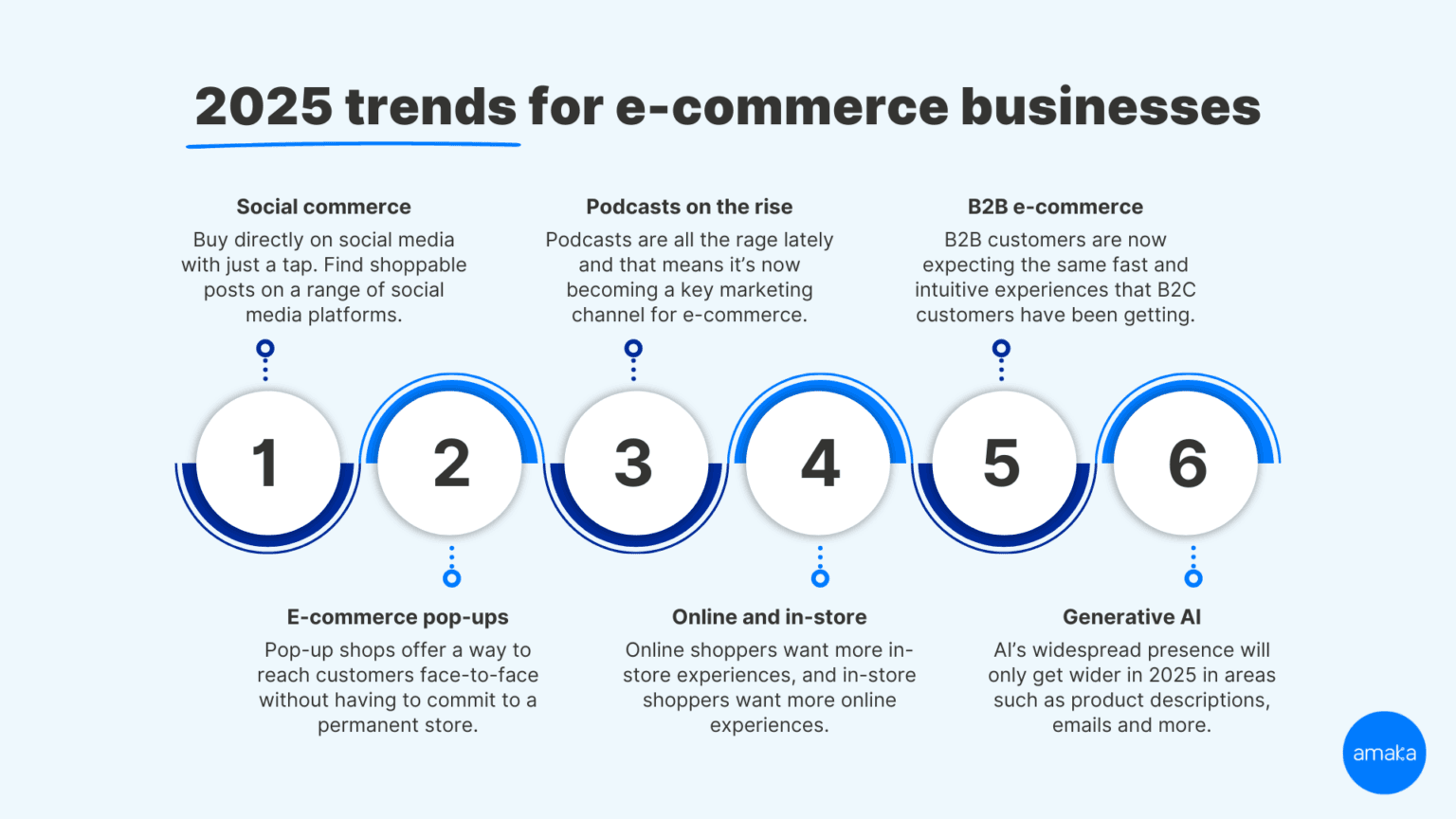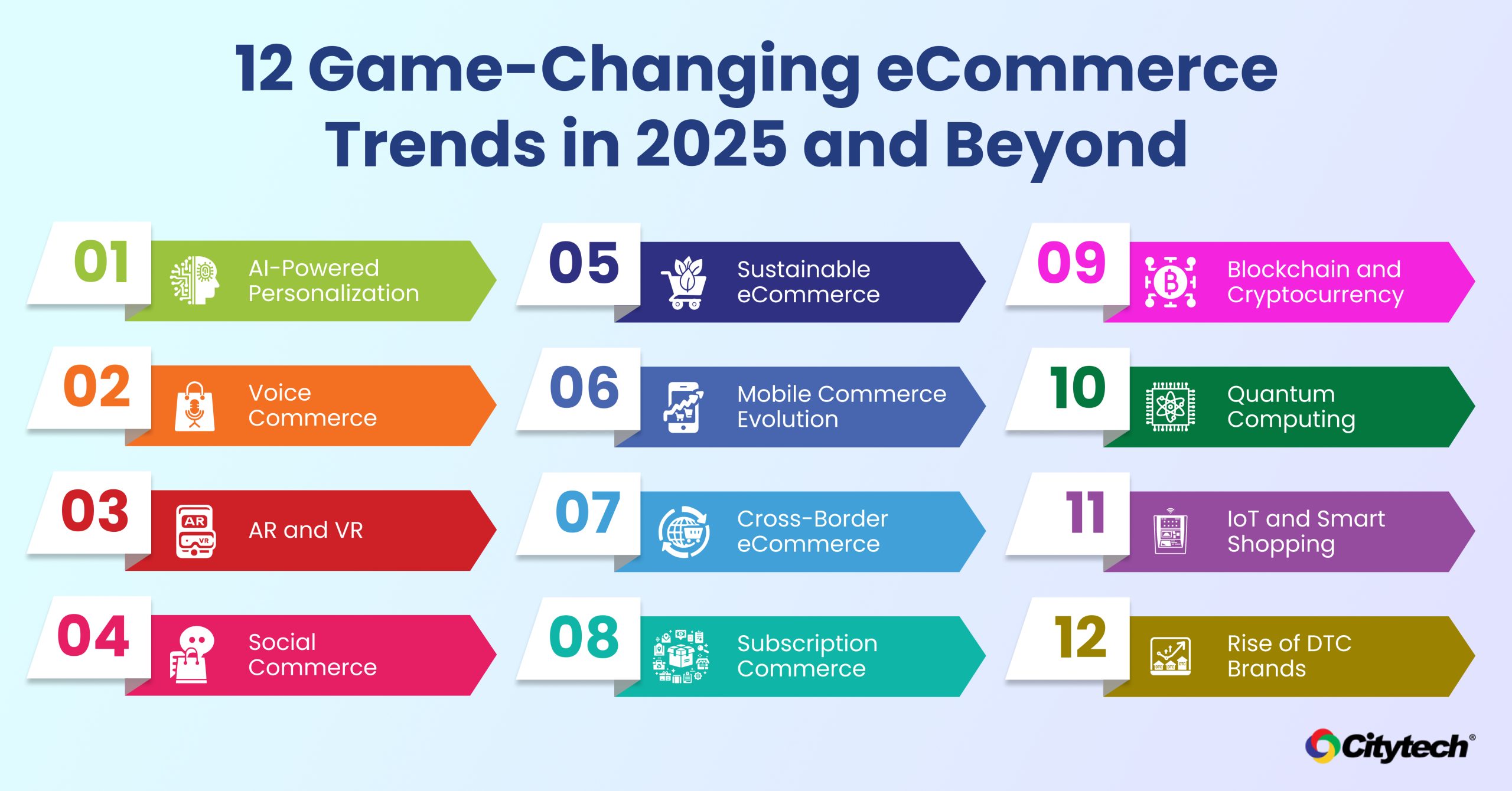Top eCommerce trends in US, Europe, and Asia 2025: A Comprehensive Analysis
Exploring the future of eCommerce in the US, Europe, and Asia in 2025, this article delves into the key trends and technological advancements that are set to reshape the landscape of online shopping.
From consumer behavior shifts to market dynamics and regulatory changes, this piece aims to provide a holistic view of what the eCommerce industry might look like in the near future.
Top eCommerce trends in the US, Europe, and Asia in 2025

The landscape of eCommerce is constantly evolving, and it is essential to stay ahead of the trends shaping the industry in different regions of the world. Here, we delve into the key eCommerce trends expected in the US, Europe, and Asia by the year 2025.
Key eCommerce Trends in the US by 2025
In the United States, the eCommerce sector is projected to witness a significant surge in the adoption of augmented reality (AR) and virtual reality (VR) technologies. Retailers are increasingly leveraging AR and VR to enhance the online shopping experience, allowing customers to virtually try out products before making a purchase.
This immersive shopping experience is expected to drive higher conversion rates and reduce product return rates.
Potential Impact of Emerging Technologies on eCommerce Trends in Europe by 2025
Europe is poised to experience a transformation in eCommerce trends driven by emerging technologies such as artificial intelligence (AI) and machine learning. AI-powered chatbots and personalized recommendation engines are expected to revolutionize the way customers interact with online stores, providing tailored shopping experiences.
Additionally, the rise of voice commerce through smart assistants like Amazon Alexa and Google Assistant is likely to reshape the eCommerce landscape in Europe, streamlining the purchasing process for consumers.
Consumer Behavior Shifts Driving eCommerce Trends in Asia for 2025
In Asia, the eCommerce industry is witnessing a shift towards social commerce, where online shopping experiences are integrated with social media platforms. With the increasing influence of social media influencers and the rise of live streaming shopping events, consumers in Asia are embracing a more interactive and social shopping experience.
This trend is expected to continue to grow in 2025, blurring the lines between social networking and eCommerce platforms.
Technological advancements shaping eCommerce

AI and machine learning, IoT devices, and blockchain technology are set to revolutionize the eCommerce landscape in the US, Europe, and Asia by 2025. Let's explore how each of these technologies will impact the eCommerce industry in their respective regions.
AI and Machine Learning in US eCommerce
AI and machine learning technologies are expected to revolutionize the eCommerce landscape in the US by 2025. These technologies will enable businesses to personalize the shopping experience for customers, optimize pricing strategies, and enhance customer service through chatbots and virtual assistants.
For example, AI-powered recommendation engines will analyze customer data to offer personalized product recommendations, increasing customer engagement and driving sales.
IoT Devices in European eCommerce Markets
In European eCommerce markets, IoT devices are anticipated to enhance the customer experience by 2025. IoT devices such as smart speakers, wearables, and connected appliances will enable seamless integration between online and offline shopping experiences. For instance, smart mirrors in clothing stores can recommend personalized outfits based on customer preferences and provide real-time inventory updates.
This integration of IoT devices will streamline the shopping process and increase customer satisfaction.
Blockchain Technology in Asian eCommerce Industries
Blockchain technology is poised to transform supply chain management in Asian eCommerce industries by 2025. By leveraging blockchain for transparent and secure transactions, businesses can track product origins, authenticate goods, and streamline logistics processes. This level of transparency will build trust among consumers, reduce counterfeit products, and improve overall supply chain efficiency.
For example, companies in Asia can use blockchain to trace the journey of products from manufacturer to consumer, ensuring authenticity and quality throughout the supply chain.
Changing consumer preferences in eCommerce
Consumer preferences in the eCommerce sector are constantly evolving, influenced by various factors such as technology, convenience, and sustainability. By 2025, these preferences are expected to have a significant impact on the way businesses operate and engage with their customers.
Analyze the impact of personalization on customer loyalty in the US eCommerce sector by 2025
Personalization plays a crucial role in enhancing customer loyalty in the US eCommerce sector
With advancements in AI and data analytics, personalized marketing strategies will continue to drive customer engagement and retention in the US eCommerce market.
Elaborate on the importance of sustainability and eco-friendly practices in European eCommerce preferences by the year 2025
In Europe, consumers are increasingly prioritizing sustainability and eco-friendly practices when making purchasing decisions. By 2025, the importance of environmental consciousness in eCommerce preferences is expected to grow even further. Companies that adopt sustainable practices, such as using eco-friendly packaging, reducing carbon footprint, and offering ethically sourced products, are likely to attract a larger customer base in the European eCommerce market.
As awareness of environmental issues continues to rise, businesses that align with sustainable values will have a competitive edge in meeting consumer preferences.
Discuss the influence of mobile shopping and social commerce on Asian consumer behaviors in eCommerce trends for 2025
Mobile shopping and social commerce are shaping Asian consumer behaviors in the eCommerce landscape. With the increasing penetration of smartphones and social media platforms, more consumers in Asia are turning to mobile devices for shopping and engaging with brands. By 2025, the influence of mobile shopping and social commerce is expected to drive a significant portion of online transactions in the region.
Businesses that optimize their websites for mobile devices and leverage social media channels for sales and marketing efforts will be able to tap into the growing trend of mobile and social commerce in Asia.
Market dynamics and regulatory changes

The eCommerce landscape is constantly evolving, influenced by market dynamics and regulatory changes that shape the way businesses operate in different regions.
Regulatory challenges in the US eCommerce landscape by 2025
In the US, regulatory challenges continue to be a significant factor impacting eCommerce operations. With the rise of online shopping and digital transactions, issues such as data privacy, cybersecurity, and taxation have become key areas of concern for regulators. As technology advances and consumer behaviors shift, regulatory frameworks must adapt to ensure a fair and secure marketplace for both businesses and consumers.
Impact of GDPR on eCommerce operations in Europe by 2025
The implementation of the General Data Protection Regulation (GDPR) in Europe has already had a profound impact on how businesses handle customer data. By 2025, the full effects of GDPR are expected to be felt across the eCommerce sector in Europe.
Companies will need to comply with strict data protection regulations, obtain explicit consent for data collection, and ensure transparency in their data processing practices. Failure to adhere to GDPR requirements could result in hefty fines and damage to brand reputation.
Role of emerging data privacy laws in Asia and their influence on eCommerce practices by 2025
In Asia, emerging data privacy laws are shaping the way eCommerce businesses operate in the region. With the growing importance of data protection and consumer privacy, countries in Asia are enacting new regulations to safeguard personal information. By 2025, these laws are expected to have a significant impact on eCommerce practices, requiring businesses to prioritize data security, transparency, and compliance with regulatory requirements.
Adapting to these changing regulations will be crucial for eCommerce companies looking to succeed in the Asian market.
Final Review
In conclusion, the realm of eCommerce is evolving rapidly, driven by technological innovations and changing consumer preferences. As we look ahead to 2025, it's clear that the way we shop online will continue to transform, opening up new opportunities and challenges for businesses worldwide.
User Queries
What are some key eCommerce trends to expect in the US by 2025?
Answer: The US is likely to see a rise in personalized shopping experiences and an increased focus on sustainability practices.
How will AI and machine learning impact the eCommerce landscape in the US by 2025?
Answer: AI and machine learning are expected to enhance customer service and streamline operations for online businesses in the US.
What role does mobile shopping play in influencing consumer behaviors in Asian eCommerce trends for 2025?
Answer: Mobile shopping is a significant factor shaping Asian consumer preferences, driving the growth of social commerce platforms.

